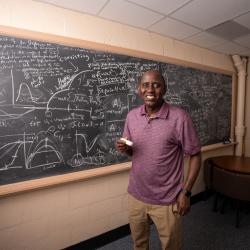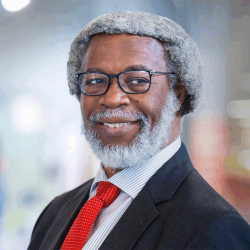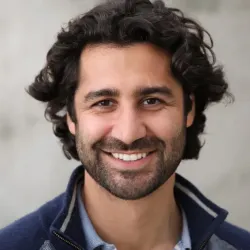Nobel Prize in Physics Awarded to Gravitational Wave Pioneers
University of Maryland physicists have played important roles in the search for gravitational waves since the 1950s
On October 3, 2017, the Nobel Committee for Physics announced the 2017 laureates for the 2017 Nobel Prize in physics. Rainer Weiss (Massachusetts Institute of Technology), Kip Thorne (Caltech) and Barry Barish (Caltech) have been formally recognized “for decisive contributions to the Laser Interferometer Gravitational-Wave Observatory (LIGO) detector and the observation of gravitational waves.” Weiss will receive one half of the award; Thorne and Barish will share the other half.
The effort to observe gravitational waves began at the University of Maryland more than 50 years ago, in the laboratory of the late Joseph Weber. Today, several UMD researchers are involved in the LIGO effort—which now includes the Virgo detector near Pisa, Italy—and a number of emeriti professors have played key roles in the historic search as well. To review UMD’s contributions to the search for gravitational waves, we invite you to revisit these stories:
“Gravitational Waves Detected 100 Years After Einstein’s Prediction”
A press release announcing the historic first detection of gravitational waves by the twin LIGO detectors on September 14, 2015, and announced on February 10, 2016:
https://cmns.umd.edu/news-events/news/gravitational-waves-detected-100-years-after-einsteins-prediction
“Gravitational Waves Detected from Second Pair of Colliding Black Holes”
A press release announcing the second detection of gravitational waves by the twin LIGO detectors on December 26, 2015, and announced on June 15, 2016:
https://cmns.umd.edu/news-events/news/gravitational-waves-detected-second-pair-colliding-black-holes
“The Chirps Heard Round the World” — Odyssey magazine, Fall 2016
A feature story that reviews UMD’s role in the effort to observe gravitational waves, from the time of Joseph Weber through LIGO’s first two successful observations:
https://cmns.umd.edu/news-events/news/chirps-heard-round-world
“Making Waves” — TERP magazine, Fall 2016
A feature story that dives deeper into the legacy of Joseph Weber and his early efforts to detect gravitational waves using resonant bar detectors:
http://terp.umd.edu/making-waves/#.WdKLGtOGPzI
“Gravitational Waves Detected a Third Time”
A press release announcing the third detection of gravitational waves by the twin LIGO detectors on January 4, 2017, and announced on June 1, 2017:
https://cmns.umd.edu/news-events/news/gravitational-waves-detected-third-time
“Gravitational Waves Detected a Fourth Time”
A press release announcing the fourth detection of gravitational waves by the twin LIGO detectors and the newly operational Virgo detector on August 14, 2017, and announced on September 27, 2017:
https://cmns.umd.edu/news-events/news/gravitational-waves-detected-fourth-time
"The Nobel Prize: A LIGO Q&A"
A podcast episode featuring UMD physics professor Peter Shawhan, a member of the LIGO Scientific Collaboration. The episode was produced to celebrate the physics behind the 2017 Nobel Prize:
https://jqi.umd.edu/news/nobel-prize-ligo-qa
"A Celebration of Gravitational Waves"
Video recorded at a panel discussion—including Weiss and Thorne as panelists—to honor University of Maryland pioneers in gravitational wave research and the dawn of gravitational wave astronomy:
###
About LIGO and Virgo
LIGO is funded by the National Science Foundation (NSF), and operated by Caltech and MIT, which conceived and built the project. Financial support for the Advanced LIGO project was led by NSF with Germany (Max Planck Society), the U.K. (Science and Technology Facilities Council) and Australia (Australian Research Council) making significant commitments and contributions to the project. More than 1,200 scientists from around the world participate in the effort through the LIGO Scientific Collaboration, which includes the GEO Collaboration. Additional partners are listed at http://ligo.org/partners.php. The Virgo collaboration consists of more than 280 physicists and engineers belonging to 20 different European research groups: six from Centre National de la Recherche Scientifique (CNRS) in France; eight from the Istituto Nazionale di Fisica Nucleare (INFN) in Italy; two in The Netherlands with Nikhef; the MTA Wigner RCP in Hungary; the POLGRAW group in Poland; Spain with the University of Valencia; and EGO, the laboratory hosting the Virgo detector near Pisa in Italy.
Media Relations Contact: Matthew Wright, 301-405-9267, mewright@umd.edu
University of Maryland
College of Computer, Mathematical, and Natural Sciences
2300 Symons Hall
College Park, MD 20742
www.cmns.umd.edu
@UMDscience
About the College of Computer, Mathematical, and Natural Sciences
The College of Computer, Mathematical, and Natural Sciences at the University of Maryland educates more than 7,000 future scientific leaders in its undergraduate and graduate programs each year. The college's 10 departments and more than a dozen interdisciplinary research centers foster scientific discovery with annual sponsored research funding exceeding $150 million.







